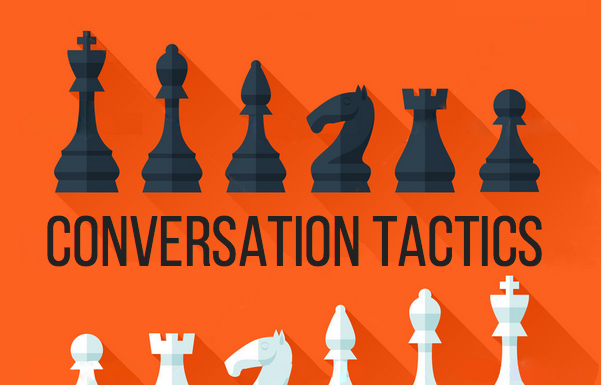
What Makes the Workplace Go ‘Round?
Ever wonder what keeps the workplace going ‘round? It’s you. It’s me. It’s us collaborating and holding each other accountable and taking bold responsibility to reach greater heights individually and collectively.
Peer to peer collaboration and accountability are not just words; rather, they are the powerful fuel that drives teams to reach for and achieve uncommon results that are larger than the individual.
Read on to learn how to use collaboration and accountability to build effective teams in your workplace to get bigger bolder work done.
Collaboration
Peer to peer collaboration gets things done, but a team like this requires mutual respect and takes the idea of teamwork to the next level. This type of collaboration requires a cooperative spirit for brainstorming ideas and building solutions to accomplish a common goal.
Hallmarks of peer to peer collaboration include:
A Solid Sense of Purpose
Individuals and groups who believe and truly collaborate see the need to work together. They understand there is a specific reason for coming together to work, and that reason benefits both team members as well as the entire company.
Equal Participation
A collaborative manager or leader insists on equal treatment for all, and ‘leaving titles at the door’ creating a dynamic space in which to work; one with clear and open communication channels that allow team members to discuss and share innovative ideas.
Brainstorming Ideas to Provide Solutions
‘Two heads are better than one’ is the perfect phrase for this important element of collaboration. Brainstorming in the peer to peer collaboration model is a key element that enables different perspectives and expertise to come together to solve a common problem.
Benefits of Collaboration Among Your Team
Encourages Self-Analysis: When peer to peer collaboration is applied in the workplace, teams plug each other’s gaps and challenge one another to be transparent in the ways they think, in how they articulate, and the way they share their abilities. Your own self-analysis acts like a mirror that enables your team to catch a glimpse of their strengths and weaknesses.
Makes You See the Bigger Picture: No two people are the same or think exactly alike. And that’s the beauty of collaboration. For when two or more gather together at the table, roll up their sleeves and leverage their differences, they discover how to complement one another. New vistas appear on the horizons of their minds and with them, fresh solutions to the task at hand. Meaningful dialogue ensues and soon, solutions are born.
Learning from the Experience: Peer to peer collaboration breeds opportunities to grow capacities, learn new skills and develop new ways to think. Even failures breed eventual success in one way or another.
Regardless of your role in your company (team member, supervisor, manager, vice president etc.) are you ready to implement peer to peer collaboration?
Consider These Five Guiding Thoughts
- Communicate Your Expectations. When you collaborate with your teammates take the time to set expectations by defining members’ roles and responsibilities. Who will do what? Decide by consensus.
- Set Team Goals. Define concise, measurable objectives to keep individual efforts aligned with desired outcomes, and be willing to re-evaluate target objectives when needed. Ensure outcomes of every objective achieved are recorded or published within the team to maintain focus and transparency.
- Adopt a Creative Atmosphere. Give team members the opportunity to ask questions and brainstorm in a relaxed context and ask why or why not on a regular basis. Creativity can only live when team members feel psychologically safe. When others “color outside the lines” with their thoughts and ideas the fastest way to kill their creative contribution is making them feel unsafe.
- Build Working Relationships. To help team members understand each other, have them complete a personality profile and set aside time to discuss each other’s strengths and weaknesses regarding communication style, the preferred method of conveying information, applicable skills, and introvert/extrovert dominance.
- Leverage Team Member Strengths. Apply wisdom here. Ensure each member is assigned tasks that play to their respective strengths. It’s not only about having the right individuals on the team but you also need them in the proper roles.
Accountability
When expectations are not met, peers have the responsibility to hold their team member accountable. Conversely, when they perform well, recognition is also their responsibility. When there is no system of accountability, projects, programs, and initiatives can fall apart quickly.
Accountability is the ability to follow through, satisfy expectations and responsibilities, and deliver what you said you would. It has a direct impact on your ability to achieve your own commitments to team members. Accountability can also mean that other team members are dependent on the results of your work, so communication must be open and proactive. Use the radical candor communication framework.
Why Accountability Matters in the Workplace
When you hear the phrase, “It’s not my fault,” you know there’s a lack of accountability. When employees don’t take responsibility for their actions, mistrust among team members is generated and could eventually become part of the company culture. When that happens, there’s no possibility of learning from mistakes.
How You Can Make Accountability a Core Part of Your Company Culture
Work on Your Feedback Skills: We all know that giving feedback isn’t easy, but you can get better at it. You need to “give a damn”, be clear and direct to prove that you care and genuinely want to help. One of the significant things you owe your teammates is to provide them with adequate feedback.
In her book, Radical Candor author Kim Scott shares how in her career she had a team member doing subpar work but for ten months she did not offer corrective feedback. Eventually, she fired the employee and learned the valuable lesson of giving radically candid criticism that empowers others to do bigger bolder work.

Over time Kim identified two dimensions to help others learn radical candor, care personally and challenge directly.
Note That Delayed Feedback Only Makes Things Worse: Yes, it can be very uncomfortable to say there is a problem somewhere, but the more you delay in providing that feedback, the worse matters get. The issue at hand can be small now, but when not properly addressed, it may turn into a larger issue which will require even more attention. Keep in mind that it’s easier to deal with an issue sooner rather than later.
Make Accountability a Habit: Don’t sit and wait for feedback. Solicit feedback from your teammates as part of your routine. And set up a reminder to give your own feedback to others which helps ensure consistency. Feedback can be praise or criticism; both need to be communicated with compassion and empathy yet given unambiguously.

Keep Track of Your Commitments and Hold Each Other Accountable: Finally, when you make a promise to provide feedback, maintain that deadline even when things don’t work out the way you expected. It helps establish trust among your peers and superiors. Feedback (praise or criticism) need not take long, a 3-minute conversation while walking to a meeting is effective.
Wrap Up
Who knows! You may already have superheroes in your workplace, but to effectively draw out the power of their innate abilities and get them to boldly go where they’ve never gone before, use these elements to create a peer to peer collaboration and accountability model. It fuels individual team members and your entire enterprise to do bigger and bolder work.
References:
Forbes.com: “New Study Finds That Collaboration Drives Workplace Performance”
Forbes.com: “How to Make Your Peers Accountable When Your Boss Won't”
Happiehour.com: “10 Ways to Promote Collaboration at Work”
Timewellscheduled.com: “Employee Accountability in the Workplace”
Tablegroup.com: “Peer to peer Accountability: The Game Changer”












